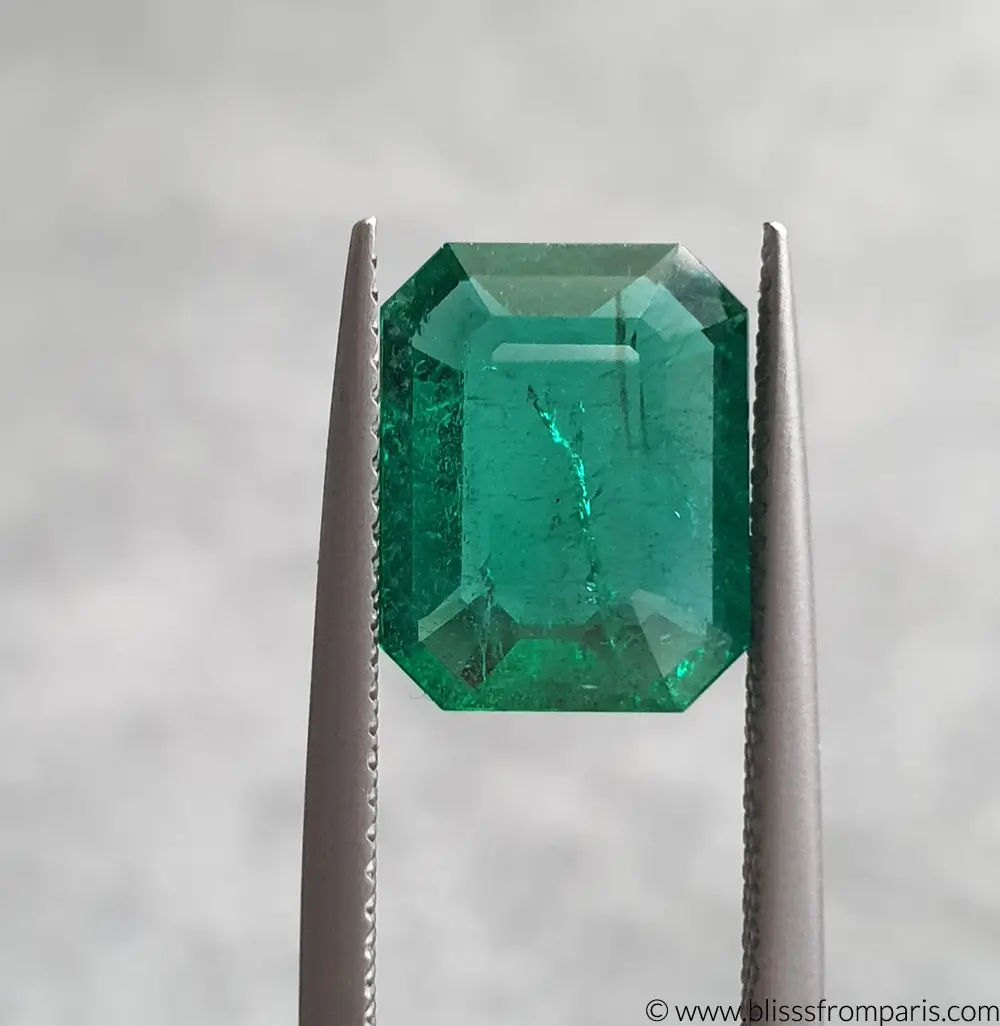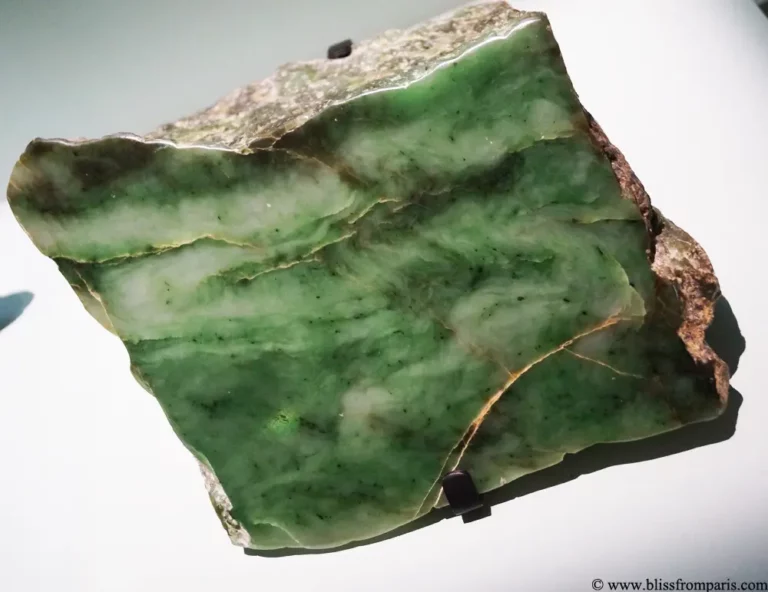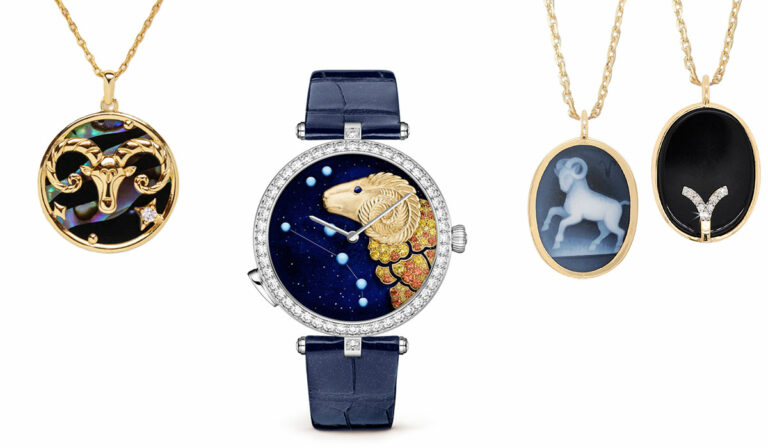Before any gem purchase you should really understand the basics of what you’re dealing with in order to be able to make informed decisions. So, let’s dive in…
Emerald cuff by Hemmerle
1) KNOW YOUR GEM!
Emeralds belong to the beryl mineral family (like aquamarine or morganite), with a hardness of 7.5-8 on Mohs scale (whereas diamonds rank 10) – meaning it’s a hard stone, although quite brittle at the same time, due to its inclusions. Its name originally comes from the word “smaragdos” which simply means green gem in Greek. The beautiful green color that emeralds are known for comes from trace elements of chromium, vanadium and iron in its structure. The main sources of emeralds are Colombia, Brazil, Zambia, Zimbabwe and Pakistan. Also, emerald is the birthstone of May.

Emerald ring by Gismondi1754
2) IT’S ALL ABOUT THE COLOUR
From a gemologist’s point of view, emerald’s color is actually broken down into three components:
- Hue
- Tone
- Saturation
Hue refers to the purity of the color – with pure green hue being the most valuable. I personally love emeralds with a bluish undertone – and THAT’S OK! You will be wearing it, so it should fit your preferences and personal style, don’t let anyone tell you otherwise. Tone is what classifies the emerald on the scale from light to dark – look for medium to medium dark tones. Saturation is the color intensity and ranges from dull to vivid. It’s a very important emerald characteristic with a significant impact on its price. For instance, a nice vivid green emerald can be much more valuable than a flawless, light green one.

Emeralds necklace by Harry Winston
3) EMERALD’S GARDEN A.K.A CLARITY
If you are reading this article, I trust you have already seen an emerald in your life and you will agree – they are usually heavily included gems. These inclusion patterns are often described as “jardin” which is a French word for garden. Emerald inclusions are normal and contribute to its uniqueness. However, watch out for the surface reaching cracks and fissures that might make the gem susceptible to breakage. Usually, emeralds are filled with transparent oils or polymer resin, which fills the fractures making them less noticeable. It’s an acceptable treatment as long as it’s disclosed to the buyer. If you cannot spot a single inclusion and the stone seems inexpensive, then it’s probably not an emerald that you’re holding… Fun fact: inclusions enable the identification of an emerald’s origin – different mining areas are characterized by particular inclusions. Sometimes it’s even possible to tell exactly which mine the stone came from!

4) CERTIFICATE IS IMPORTANT BUT NOT A DEAL-BREAKER
Always ask about the certificate. It is the one true guarantee (well, unless you’re an experienced gemologist!), that what you’re buying is legitimate. It should include the following details: carat weight, size, origin, date of report, name of the certifying institution and treatments. Be mindful that emeralds tend to be sold without certificates, in which case seek professional advice and buy from reliable suppliers (you want to be sure that the stone is natural).

5) EMERALD PRICING
Asking how much an emerald cost is much like asking how much a car costs. However, some general rules can be observed. Darker tones (but not too dark!), vivid saturation and pure green hue are the Holy Grail of emeralds. The color should be evenly distributed. Since flawless emeralds are extremely rare, clarity is the second major factor affecting the price. “No oil” (which means they are not oil treated) transparent emeralds will always be the most expensive. The origin also plays an important role – Colombian emeralds are significantly more expensive than other emeralds. Last but not least, the price will rise dramatically with size, as it is rare and more difficult to mine larger stones.

6) BE WARY OF GREAT DEALS
“I found a cheap, perfectly cut, pure green vivid emerald with no inclusions” said no one EVER. Cheap price should make you instantly suspicious, as it’s the best indicator that there is something wrong with the stone. Always inspect the gem from different angles, as sometimes these great deals can turn out to be doublets or triplets – stones composed of a thin layer of actual emerald but glued to a different material like quartz. This is often not immediately visible and in case of emeralds set in jewellery can be hidden in the setting. Also, if you see the word “created”, usually followed by the company name, it’s a synthetic emerald or a simulant (e.g. glass).
SO …
The key to buying emeralds is knowledge and finding the perfect balance that suits your preferences. Always research and understand what’s worth paying for, compare different options, find out what it is that you like, set your priorities and compromise on the rest. Good luck!
Gemologist and jewelery expert
Toi et Moi Jewellery Consulting





